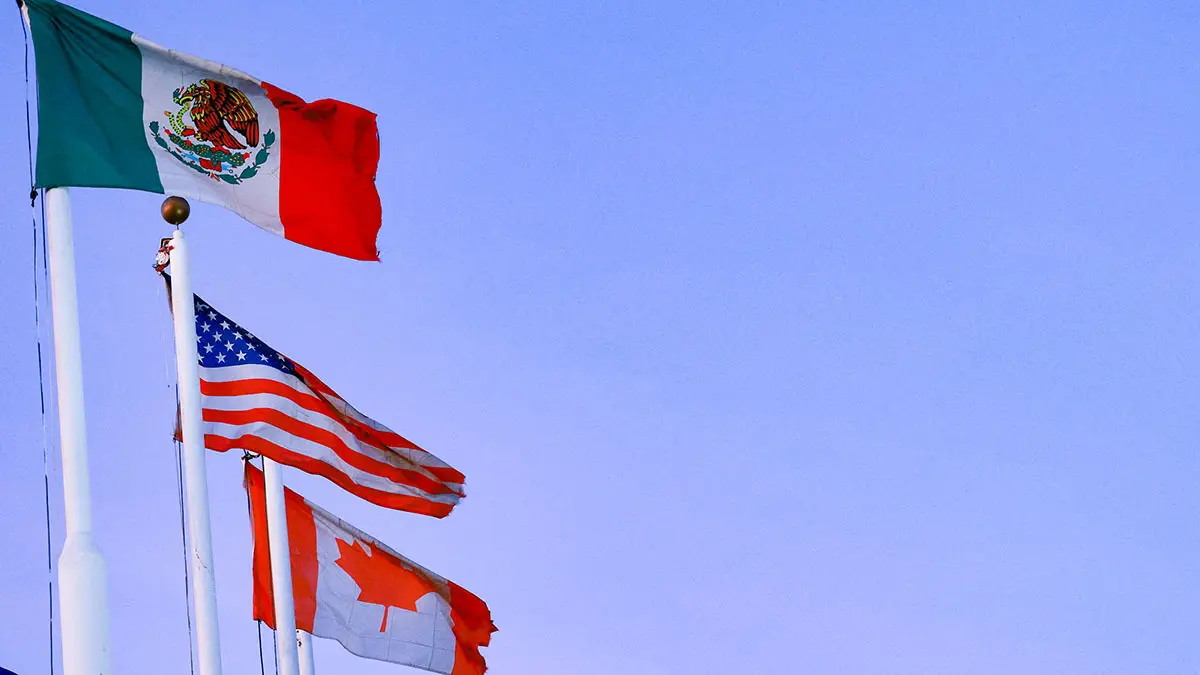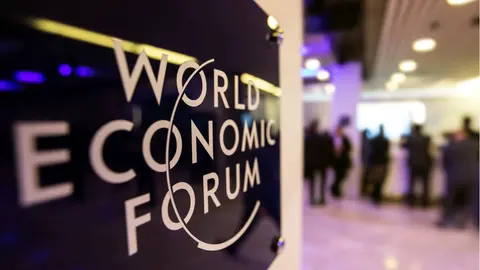Trump shoots his country by imposing tariffs on Mexico and Canada

The President of the United States, Donald Trump, has imposed tariffs of 10% on China and 25% on both Mexico and Canada, and 10% on Canadian energy products. The measure, which he had been announcing since his candidacy, continues to cause a stir because it is fundamentally about punishing his two fundamental partners of the last 30 years.
The three economies that signed the North American Free Trade Agreement (NAFTA) on 1 January 1994 have been undergoing a review and readjustment process since 2018 and it came into force again with its new sections as of 1 July 2020 under the name of the Agreement between Canada, the United States of America and the United Mexican States; in Mexico, it is popularly known as T-MEC.
In fact, Trump was president when he signed the revision and, of course, it was implemented with his approval; now, he returns to the White House determined to use tariffs as a weapon of punishment to expand the trade war he already started against China in his first term.
He is also convinced that this formula of retaliation will strengthen his economy and correct the trade deficits he has in his respective balances with Mexico, Canada and China. He is unaware that this imbalance arises from the enormous loss of competitiveness and productivity suffered by the US economy since the 1980s.
Under the International Emergency Economic Powers Act (IEEPA), the US president invokes a series of unilateral powers for a series of measures (such as tariffs), arguing that a national emergency is threatening the security of his nation.
For him, these risks are the growing flows of illegal immigration, the internal war on opioids and the trafficking of fentanyl that is poisoning the addicted American population with drugs. Of these phenomena, Trump directly accuses Mexico and Canada of doing nothing from their borders to prevent either illegal immigration or the transfer of drugs.
This is how he justifies his tariff crusade against his two traditional trading partners (Canada buys 75% of his exports and Mexico 80%), although in reality there is an obsession with reducing the huge trade deficits that his economy is running up.
According to the US Census Bureau, from January to November, the US imported 377.2 billion dollars‘ worth of Canadian goods and exported 322.2 billion dollars’ worth of goods to Canada. A deficit of 55 billion dollars.
In the case of Mexico, whose economy has such a special link with the North American economy that, since the tariffs imposed by Trump during his first term of office against China, it has become the most important trading partner, Aztec exports to the United States were worth 466.6 billion dollars and imports by Mexico totalled 309.4 billion dollars. The deficit with Mexico is 157.2 billion dollars.
Even so, the US's largest trade deficit is neither with Mexico nor with Canada, but continues to be with China despite the tariff war that began in 2018 and which Democratic president Joe Biden did not reduce one iota. Now, Trump will impose an additional 10% on China in an attempt to reduce the deficit with the Asian giant, which last year totalled 270.4 billion dollars.
While the government of the Chinese president, Xi Jinping, replies that it will denounce the United States before the World Trade Organisation (WTO), in Canada, the prime minister, Justin Trudeau, will act accordingly: quid pro quo and from next week he will tax US products at 25% for a value of 155,000 million dollars; at least 30,000 million will come into effect on 4th February and another 125,000 million in three weeks.
For her part, the president of Mexico, Claudia Sheinbaum, instructed Marcelo Ebrard, the Economy Minister, to activate Plan B, which they have been drawing up for three months and which includes a response with tariff and non-tariff measures.
The consequences of this new version of the trade war in which Trump directly attacks his two closest trading partners will be quite negative, especially for the US economy itself. The Republican has decided to shoot himself in the foot and he is doing so ignoring a huge number of warnings from influential groups of economists who point out the damage to various productive sectors.
In order to continue manufacturing, they will import more expensive intermediate and final goods; and this will be passed on to the end consumer, impacting their pockets and hitting inflation.
There are sectors at risk, such as the automotive industry. The traditional global automotive industry is undergoing a profound transformation in the face of the advance of Chinese electric cars.
In Europe, countries such as Germany are experiencing a structural crisis, dragged down by the Volkswagen value chain and the negative impact of energy supplies due to the lack of cheap Russian gas and oil.
In the United States, the automotive industry continues to lose share of global production and has ceased to produce competitively; more expensive imports of goods made in Canada and Mexico will only raise the final prices of vehicles, which will continue to be less competitive.
The president of Mexico, Sheinbaum, announced that as part of this Plan B, the tariff response will hit the agricultural sectors that supported President Trump with their votes.
What is happening does not bode well, neither for the economies involved in the tariff sanctions nor for the rest of the world. The International Monetary Fund (IMF) and the World Bank (WB) will already adjust world growth downwards based on the new tariff measures that will come into force on 4 February.
Trump, who has surrounded himself with an oligarchy in power, is determined to demonstrate his supremacist vision in which issues such as security, defence, immigration, trade policy, artificial intelligence and the space race are hot topics.
A protectionist trade policy that upsets the balance with its traditional trading partners is a very bad sign that is already being reinterpreted by China and Russia. Both countries are moving forward with the BRICS to create their own large trading bloc, forging alliances and seeking their own spheres of influence, while Trump, ignorant of history, is using a sledgehammer to smash his spheres of influence and attacking his allies.
Trump's trade walls belong to the Middle Ages, no prevailing economic model has ever interwoven as many binding value chains as is the case in 2025. Today the flutter of a butterfly's wings in South Africa has an impact in Australia.
And, of course, Ursula von der Leyen can start putting that document she has already prepared on the table on her desk to respond to the tariffs that Trump will impose on various European Union (EU) products. Because Europe is next.



